Knowde Enhanced TDS
Identification & Functionality
- Chemical Name
- CASE Ingredients Functions
- Cleaning Ingredients Functions
- Fluids & Lubricants Functions
- Industrial Additives Functions
- CAS No.
- 8042-47-5
- EC No.
- 232-455-8
- Technologies
- Product Families
Features & Benefits
- CASE Ingredients Features
- Fluids & Lubricants Features
- HII Features
- Industrial Additives Features
- Product Highlights
- Penreco® has developed a unique system for thickening and gelling hydrocarbons. With an infinite number of customized rheological properties available, these Synergel products are clear, colorless, hydrophobic, thermally reversible, and without syneresis.
- Synergel products are available in multiple viscosity ranges and are compatible with many ingredients. Synergel products are visually appealing and do not discolor with age. They are easier and safer to formulate with than gels that use metal stearates or fumed silica and they provide fragrance retention and waterproofing properties.
- Blending Recommendations
Due to the solubility characteristics of the gellants used in the Synergel product lines the critical factors that impact the stability of the gels or the success of the finished products are:
- The order of the other chemicals being added to the formula
- Mixing time
- Mixing temperature
- Benefits of Synergel with Formulations
Versatility
- Compatible with a wide variety of low polarity ingredients
- Broad range of viscosity profiles that don’t change over time
- Ease of incorporation in post batch modifications
Performance
- Strength and durability
- Enhanced lubrication
- Excellent flexibility and crack resistance
- Exceptional product and emulsion stability
Stability
- Self-preserving formulation base
- Resists growth/proliferation of microorganisms
- Heat processed & micro-filtered
- No harsh chemicals and low toxicity
Cost Effective & Formulation Friendly
- Reduces the amount of structural material required to make a formulation
- No child-resistant packaging required
- Easy to use with a high level of formulation processability
- Efficient delivery system
Applications & Uses
- Applications
- Applicable Processes
- Application Method
- Fluids & Lubricants Type
- Fluids & Lubricants End Use
- Home Care Applications
- I&I Cleaning Applications
- Spray Applications
- Anhydrous bases for spray-on applications are commonly used due to their innate water resistance and moisturization. We completed a study on our innovative thickening technology that allows gelled anhydrous products to be delivered through a pump spray while maintaining body, suspension or emulsion stability, and an acceptable spray pattern.
- Anhydrous fluids used in spray trigger products often are mineral oil-based, due to the low cost and readily availability of these oils. In general, the finished products also have a low viscosity, below 100 SUS at 100 °F. For low viscosity anhydrous products, the types of spray trigger systems currently in use can ensure an excellent spray pattern. However, when sprayed on a nonhorizontal surface, a low viscosity liquid will drip, spill, or run down the surface. This leads to a poor coverage, wasting of the product, and low effectiveness in use.
- It is well known that mineral oil is considered a Newtonian fluid, which means that the oil’s viscosity does not change when shear stress is applied. By comparison, Synergel products have viscoelastic, non-Newtonian properties. While most of these gels are shear thickening (rheopectic/dilatent) products, shear thinning (thixotropic/pseudoplastic) gels can be created by rigorous control of the polymer system.
- The Synergel low viscosity gels can be dispensed through a spray trigger nozzle due to their shear thinning properties. The gel will drop in viscosity as it passes through the spray trigger (shear stress) and rebuild viscosity when the stress ceases.
- Order of Addition for Other Chemicals Being Added to the Formulations
The rule of thumb for adding chemicals to the gel is to always add the ingredients with the least polarity first. If the formula contains the same base oil as the gel, it should be added first. Polar materials tend to break down the gel network so they should be added last. The following is the order generally followed:
- Mineral Oil, Hydrocarbons, Waxes
- Fatty Esters and Fatty Alcohols
- Emulsifiers
- Silicones
- Essential Oils
- Product Applications
- Automotive Products
- Ballastics/Firearms
- Chemical Processing
- Coatings
- Degreasers
- Fishing Bait
- Hand Cleaners
- Household and Industrial Cleaners
- Lighter Fluid
- Metal Rolling Oils
- Metalworking
- Mineral Seal Oils
- Paints
- Polishing
- Printing Ink Oils
- Pyrotechnics
- Solvents
- Spray Furniture Polish
- Spray Paint
- Strippers
- Water Treatment Chemicals
Properties
- Typical Properties
| Value | Units | Test Method / Conditions | |
| Flash Point | min. 300 | ˚F | ASTM D92, COC |
| Saybolt Color | min. 20 | — | ASTM D156 |
| Specific Gravity (at 25 ˚C) | 0.8494 | — | ASTM D4052 |
| Viscosity (at 100°F) | 115 - 135 | SUS | ASTM D2161 |
| Base Material (Vis White Oil) | C-340 & 70 | — | — |
Regulatory & Compliance
- Certifications & Compliance
- Quality Standards
- Regulatory & Compliance
All Synergel products are processed in a segregated and dedicated area of a FDA Registered Drug Establishment. However, Synergel products are NOT food/pharmaceutical grade products.
- FSSC 22000 (GFSI)
- cGMP standards
- USP Testing capability
- State Dept. of Health registration
- ISO 9001:2015
- Kosher OU
- FDA Registered Drug Establishment
Technical Details & Test Data
- Mixing Time
Generally, the blend is complete when no lumps are visible, the blend has a smooth texture, a consistent viscosity at the appropriate temperature, and the blend does not immediately separate once the mixing stops.
- Heating Incorporation of Finished Product Ingredients Recommendations
- The viscosity range of the Synergel directly affects the ease at which ingredients are incorporated. Higher viscosity products may require more heat while lower viscosity products may require less heat.
- The recommended heating/incorporation temperature of these two mineral oil based Synergel products is 75° - 95 °C. This recommendation is based on the higher flash points of the substrate or base material being used.
- Solvent and Mineral Oil - Based
- Synergel HB technology can be used in spray applications. The gelled substrate is very pure with low aromatic content and is VOC compliant. The chemical properties, combined with the narrow distillation range, give our specialty hydrocarbon fluids distinct advantages in meeting environmental regulations and VOC requirements.
- Synergel HB technology is shear thinning and can be used in spray applications. Shear is created when you spray through a small opening such as a nozzle. The Synergel products provide a good dispersion and spray pattern in end applications such as furniture cleaners.
- The high viscosity white oil and solvent by themselves are very fluid. Thus by gelling the substrates, product is easily applied to the area needed and has greatadhesion properties.
- Cleaning Equipment Recommendations
- Allow the vessel to drain while warm.
- Mineral oil may be heated and added to the vessel to wash out the remaining product.
- Rheological Profile
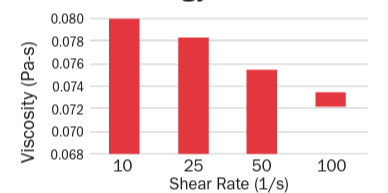
- Synergel HB 125 exhibits an instantaneous and temporary decrease in viscosity with shear. Synergel products can either be shear thinning or shear thickening. Once the shear stress is removed, it will return to its original viscosity.
- Rheological measurements of the gel shown in the Rheolgoy Profile graph show a 14 % decrease in viscosity as the shear rate increased from 10 sec-1 to 100 sec-1.
- Spray Patterns of Gels Compared with Mineral Oils
We conducted a spray pattern analyzes for gelled mineral oil versus ungelled mineral oil, where both products have the same viscosity. For example, a gel with a viscosity of 250 SUS at 100 °F was compared with a mineral oil with the same viscosity. Since the polymer gellants increase the viscosity of mineral oil, an oil with a viscosity less than 250 SUS was gelled up to a viscosity of 250 SUS.
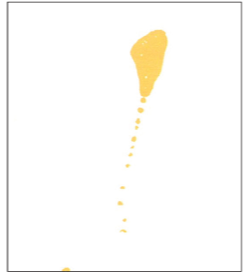
Figure 1 shows the spray pattern of the ungelled mineral oil
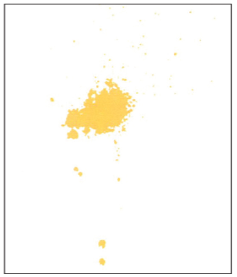
Figure 2 shows the spray pattern of the gelled mineral oil.
There is a noticeable difference between the two spray patterns with the gel having a greater spreadability. This is due to the ability of the gel to thin when sheared by the spray trigger mechanism. The ungelled oil does not thin when sheared, so it results in a spray pattern of less area.
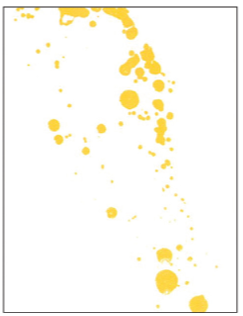
Figure 3 A hydrocarbon gel which has a viscosity of 600 SUS at 100 °F
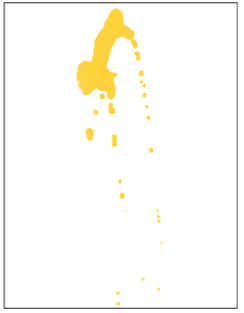
Figure 4 A mineral oil with a viscosity of 600 SUS at 100 °F
- A second spray pattern experiment was conducted on a hydrocarbon gel which has a viscosity of 600 SUS at 100 °F (Figure 3) compared to a mineral oil with a viscosity of 600 SUS at 100 °F (Figure 4). As expected, the gel had a better spray pattern.
- With spray trigger products gaining in popularity in household applications, the use of improved ingredients in these applications is becoming more important to both formulators and consumers. Pseudoplastic gels have great potential in spray trigger products due to their ability to drop in viscosity when shear stress is applied.

